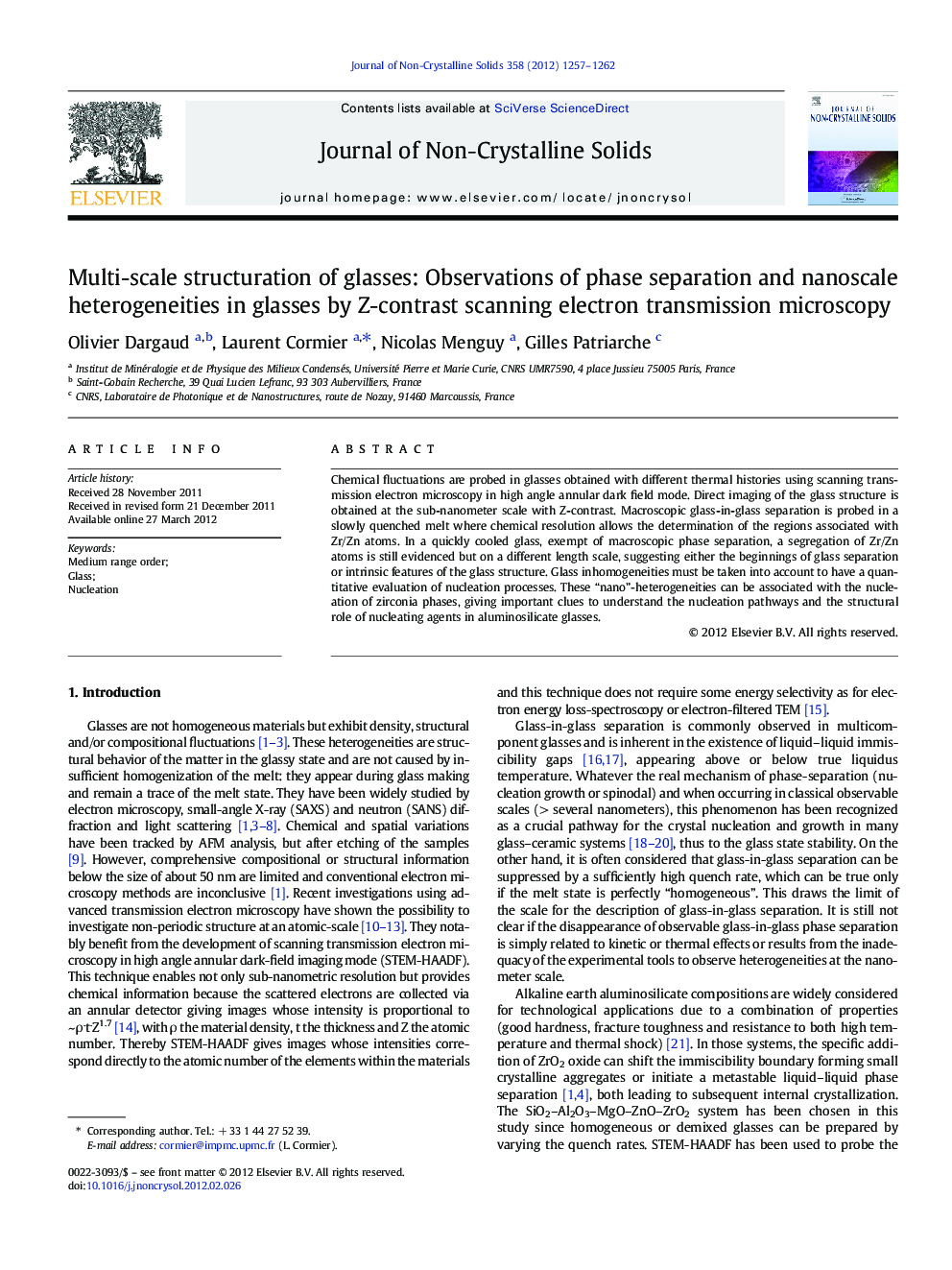| Article ID | Journal | Published Year | Pages | File Type |
|---|---|---|---|---|
| 1481943 | Journal of Non-Crystalline Solids | 2012 | 6 Pages |
Chemical fluctuations are probed in glasses obtained with different thermal histories using scanning transmission electron microscopy in high angle annular dark field mode. Direct imaging of the glass structure is obtained at the sub-nanometer scale with Z-contrast. Macroscopic glass-in-glass separation is probed in a slowly quenched melt where chemical resolution allows the determination of the regions associated with Zr/Zn atoms. In a quickly cooled glass, exempt of macroscopic phase separation, a segregation of Zr/Zn atoms is still evidenced but on a different length scale, suggesting either the beginnings of glass separation or intrinsic features of the glass structure. Glass inhomogeneities must be taken into account to have a quantitative evaluation of nucleation processes. These “nano”-heterogeneities can be associated with the nucleation of zirconia phases, giving important clues to understand the nucleation pathways and the structural role of nucleating agents in aluminosilicate glasses.
► Chemical fluctuations probed in glasses with different thermal histories. ► Glass-in-glass separation directly imaging on a new scale with chemical resolution. ► Segregation of Zr atoms in a glass exempt of macroscopic phase separation. ► Description of the nucleation mechanisms leading to the formation of glass–ceramics.
